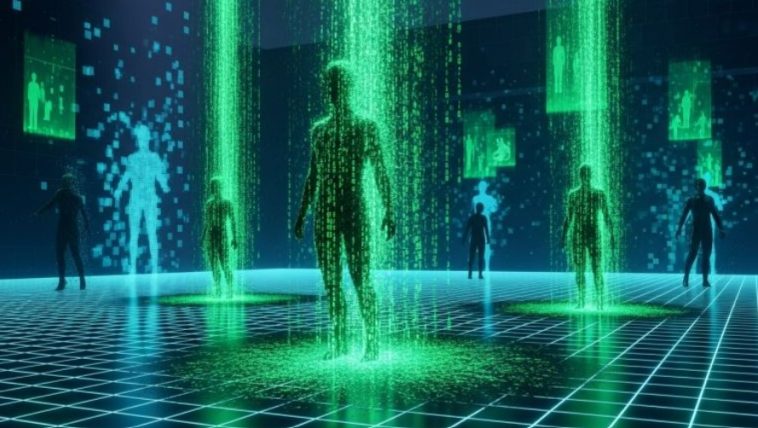Could Our Universe Be a Simulation?
The idea that our universe might be a vast computer simulation sounds like something straight out of a science fiction movie. Yet, with the rapid advancements in technology and artificial intelligence in recent years, this concept has gained increasing attention from philosophers and physicists alike. If our reality is indeed simulated, could there be “bugs” in the code that underpin our world?
Prominent thinkers in simulation theory, such as Swedish philosopher Nick Bostrom, argue that highly advanced civilizations in the future could develop the ability to create realistic simulations of their ancestors or possible life forms, and potentially run countless such simulations. If this is true, the probability that we are living in an actual, base-level reality is mathematically much lower than the probability that we exist in one of these simulated worlds.
This leads to a tantalizing question: could the programmers of such a hypothetical simulation have made mistakes? Could the universe itself contain imperfections or glitches similar to the “bugs” we experience in software today? Below are some speculative examples.
1. Quantum Mechanics and the Double-Slit Experiment
One of the most striking “bugs” that simulation theorists point to is the peculiar behavior of quantum mechanics. The double-slit experiment, first performed by Thomas Young in 1801, offers a fascinating example.
In this experiment, light behaves as a wave when unobserved, passing through two slits simultaneously and creating an interference pattern. However, when observed, it behaves as a particle, going through only one slit and forming two distinct lines. Similar behaviors have been observed in electrons and even in large molecules like buckyballs, which are about 0.7 nanometers in diameter—half a million times larger than a proton.
From a simulation perspective, this could be explained as a form of resource optimization: a computer simulation might not need to process every detail at all times. Just like a video game only renders objects the player is looking at, the universe could only “collapse” quantum possibilities into a definite state when observed. The wave function, representing multiple potential outcomes, might be akin to an unprocessed data pool, resolved only when required by observation.
2. Inconsistencies in Physical Laws or “Patchy Updates”
If our universe is indeed a simulation, the laws of physics could be interpreted as programmed code. Some speculated anomalies include:
- Variable constants: Occasional or spatial variations in fundamental constants, such as the speed of light or gravitational constant, could reflect patches or discrepancies in the simulation, or differences across hypothetical “servers.”
- Unexplained phenomena: Dark matter, dark energy, and other cosmic mysteries may be shortcuts or background calculations within the simulation, akin to compression algorithms or hidden processing layers.
These inconsistencies, while subtle, fuel speculation about the computational nature of reality.
3. Limits of the Simulation’s Resources
All computer systems have finite resources, and a simulated universe could be no different:
- Perceptual limits: Humans may not perceive certain phenomena or dimensions because the simulation does not fully render unobserved regions, conserving processing power.
- “Map boundaries” of the universe: Certain parts of the universe are inaccessible or incomprehensible, potentially representing unprocessed areas or regions not fully computed yet.
Such limitations mirror video game mechanics, where distant or unvisited areas are rendered at lower resolution or not at all until needed.
4. The Speed of Light as a Processing Constraint
The speed of light might represent a maximum processing speed for the universe. Interestingly, quantum particles can interact instantaneously, defying the apparent speed limit, which could be seen as a type of optimization glitch in the simulation’s code.
5. Large-Scale Cosmic Events
Sudden phenomena, such as accelerations in the universe’s expansion, could theoretically represent system-level adjustments or the correction of a bug within the cosmic simulation. While these ideas are purely speculative, they offer an intriguing lens through which to examine unexplained events in the cosmos.
Why These “Bugs” Matter
While these simulation “glitches” are not scientifically proven, they provide a new perspective on otherwise inexplicable observations. As technology advances and we develop our own simulations, questions about the nature of our reality are likely to become even more pressing.
- Could small quantum anomalies eventually reveal the underlying code of the universe?
- Are phenomena like the double-slit experiment hints of a deeper computational framework governing existence?
These questions blur the line between science fiction and philosophical inquiry, inviting both scientists and thinkers to explore the limits of our understanding of reality.
The Timeline of a Simulated Universe
If one day humans were able to simulate a universe as complex as our own, how long would it take? Could such a simulation be feasible in 50, 100, or 1,000 years? And if it is possible, then logically, the probability that we are currently within a simulation increases. In fact, millions of such simulations could theoretically exist simultaneously.
This notion challenges conventional understanding of reality, prompting profound questions: Are the laws of physics absolute, or merely the rules of an advanced simulation? Could our experiences, consciousness, and the passage of time itself be programmed outputs within a cosmic computer?
Conclusion: A Universe Full of Questions
Whether or not we live in a simulation remains a mystery. The universe presents peculiar behaviors and anomalies that fuel speculation about our reality’s computational nature. From quantum mechanics to cosmic inconsistencies, these phenomena invite us to question the fundamental assumptions of existence.
Simulation theory pushes us to consider that:
- Our perceived reality might be one of countless simulations.
- Unexplained anomalies could be the “bugs” or optimization choices of a cosmic program.
- Our understanding of physics and consciousness may evolve as technology allows for simulated worlds of our own creation.
Ultimately, whether the universe is simulated or not, exploring these ideas challenges our perception of reality and encourages a deeper inquiry into the very fabric of existence. Perhaps one day, a small quantum “glitch” will provide the key to understanding the code of the cosmos.

